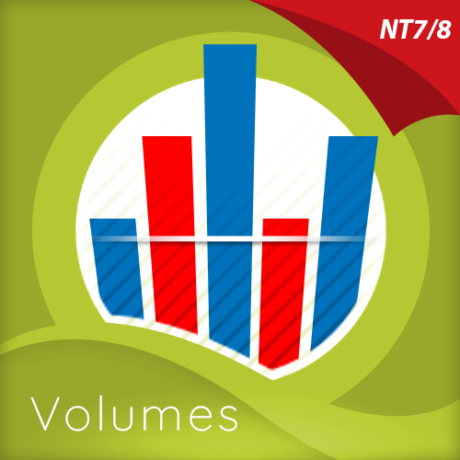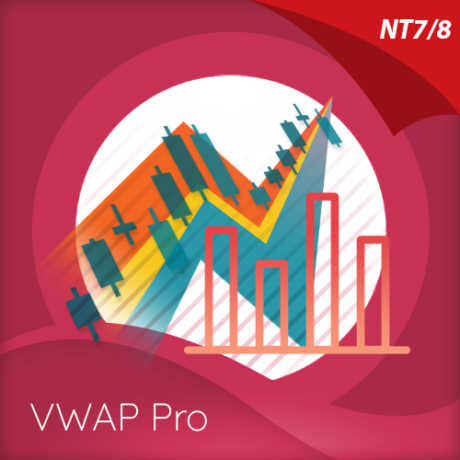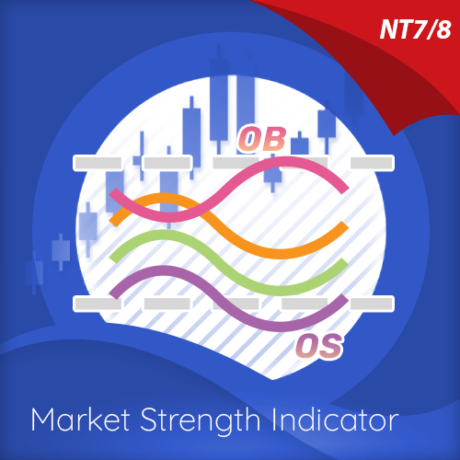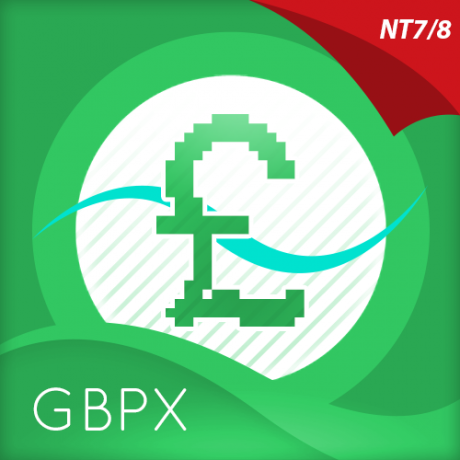Introduction
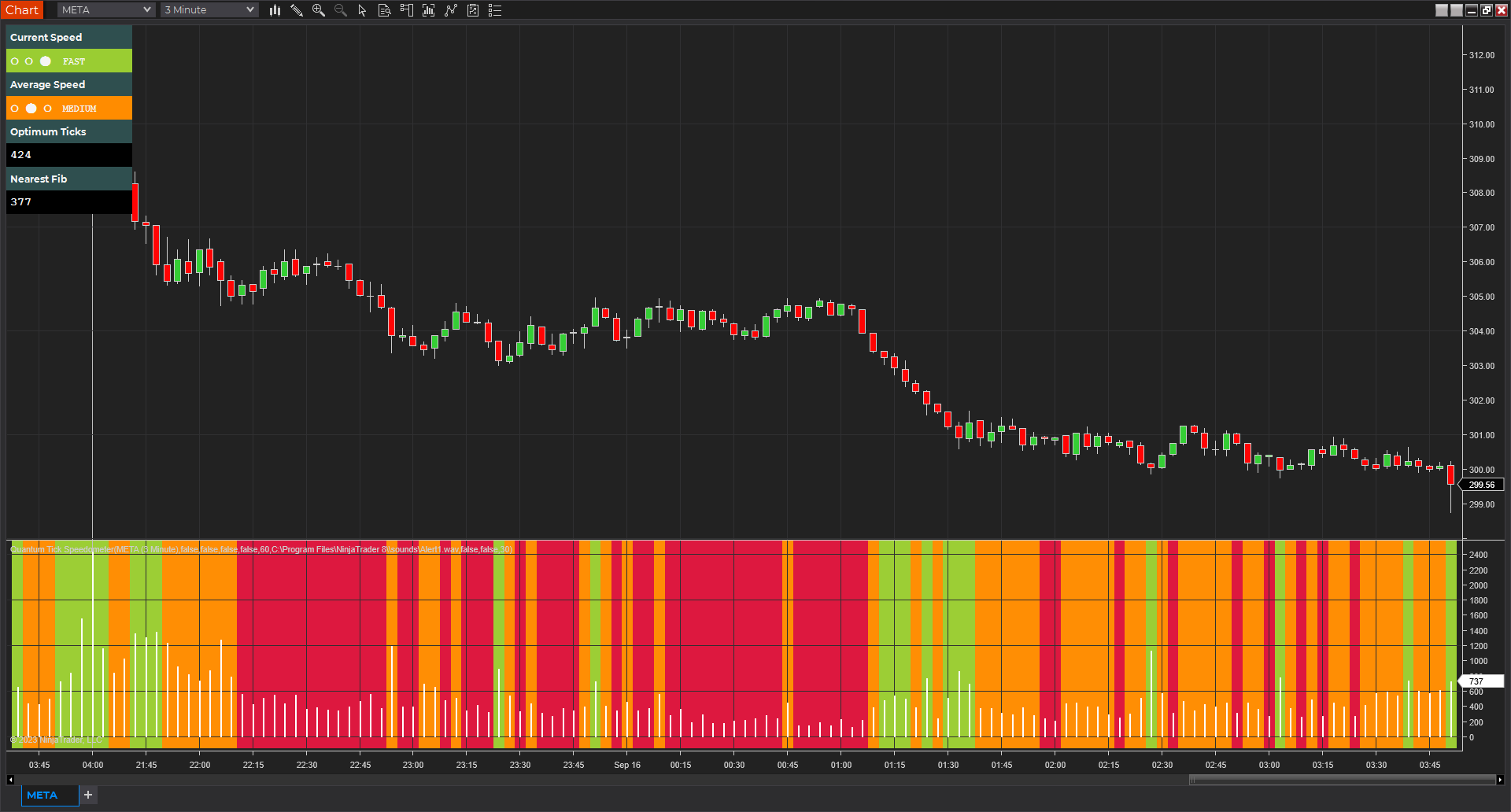
The Quantum Tick Speedometer indicator has been designed with one simple objective. To place the power of tick trading in your hands. It does this in several unique ways.
First, the indicator is dynamic. This is not a static indicator which only displays data based on history. It is dynamic, counting and displaying tick activity in real time as the market moves tick by tick, and minute by minute.
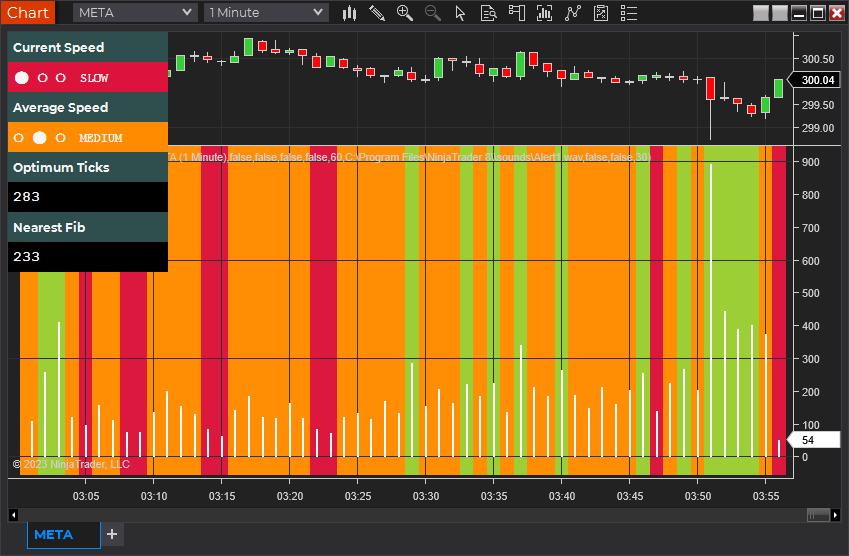
Second, the indicator acts as the bridge between time and tick. Apply the indicator to a time-based chart and it will display the current tick speed for that instrument, at that precise moment in the session. It’s a time tick converter if you like. So, for example if you are an index trader and prefer the 1-minute chart, apply the indicator and this will then display the equivalent tick speed for the index dynamically. This will change throughout the trading session allowing you to see the momentum changes as tick speeds increase or decrease accordingly.

Third, the indicator displays both the actual and the closest Fib number. This gives you the option to trade using the actual tick speed, or the closest Fibonacci number to the actual. The Fibonacci number will change less often requiring fewer changes to the tick chart setting, whilst the true number will change more frequently. It’s your choice.
Fourth, the indicator includes a traffic light system which gives a visual signal of whether the tick speed for that timeframe is speeding up or slowing down. When the red traffic light is displayed it’s a strong signal of low volatility, and a warning signal of possible danger ahead as the price action moves into congestion.
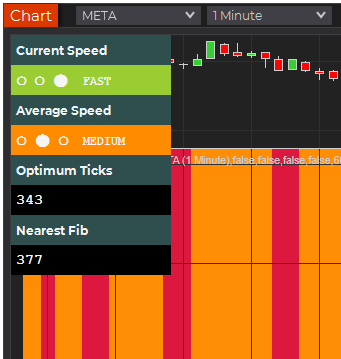
Fifth and last, the indicator displays the levels of tick activity graphically, showing those areas of high medium and low volatility.
The indicator works in all timeframes from seconds and minutes, and with all instruments and markets. So, whether you are a scalping trader on the ES E-mini or other indices, or perhaps a swing trader of commodities, stocks, or bonds, the indicator will deliver all the tick information you need to start trading with the professionals.
The Quantum Tick Speedometer indicator finally puts the power of tick trading within your grasp. No more guesswork, no more asking other traders – soon they will be asking you! The Quantum Tick Speedometer indicator is easy to install and configure, then presents all the tick data for you simply and graphically. All you have to do is start trading and join the professionals today.
Installation
Open your NinjaTrader 8 platform and select a chart.
Right click the chart to bring up a menu which looks like the following image:
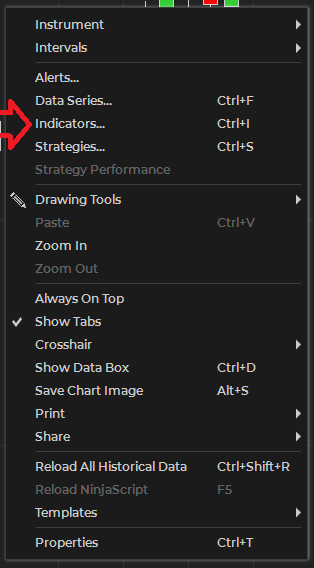
Select Indicators… which will open the following window. Alternatively, you can open this window by clicking the Indicators button in the chart toolbar or by pressing Ctrl + I while focused on the chart.
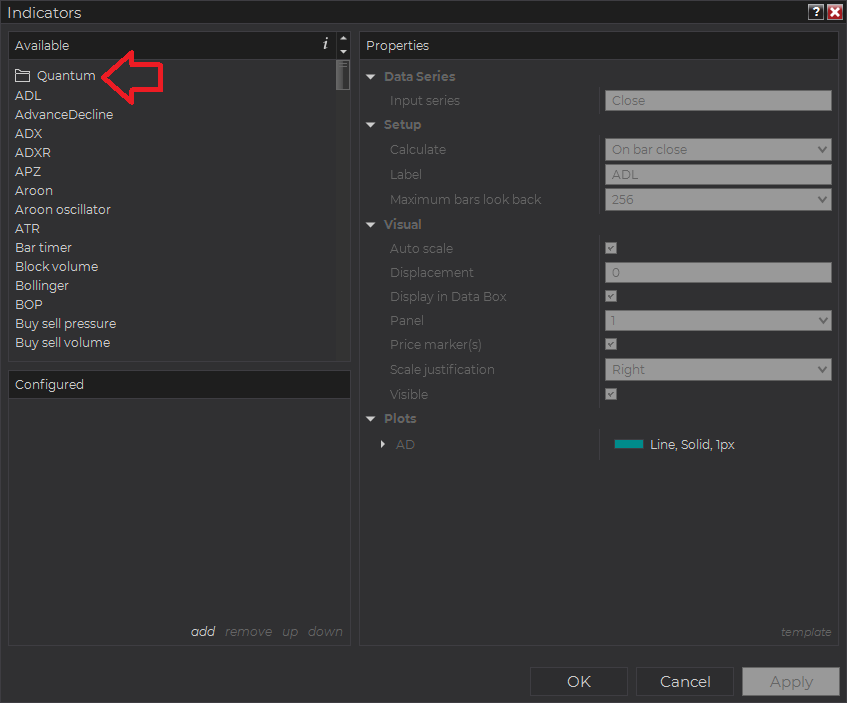
In the Indicators window under Available section, go to Quantum > Quantum Tick Speedometer and click it to select the indicator. Once selected, click “add” under the Configured section which will put it on the list of active indicators to be added in the chart.
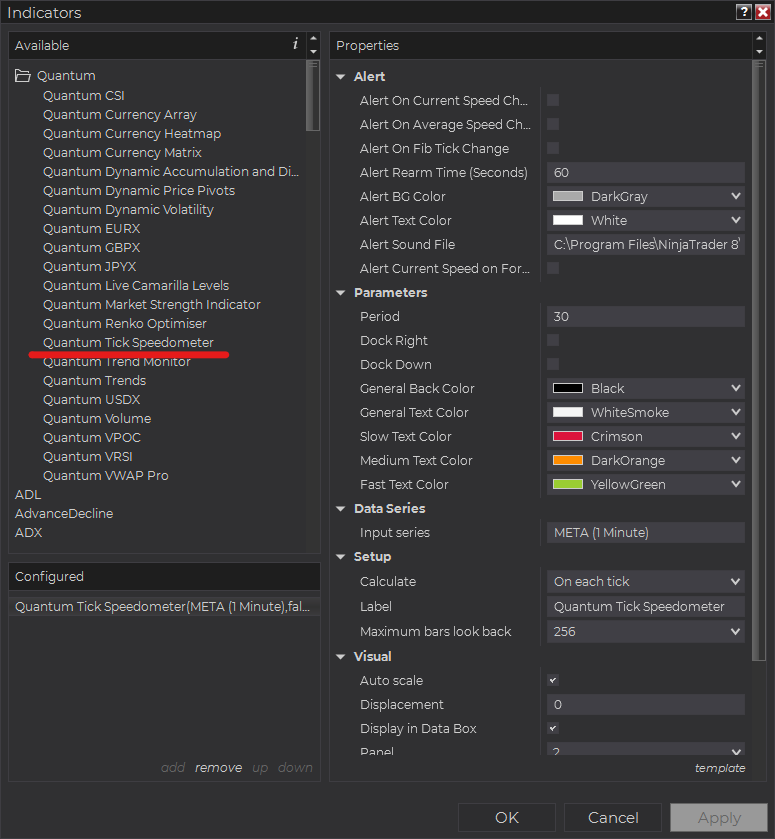
Before clicking the OK or Apply button to complete, the indicator has several configurable options. You can click the Apply button at any time, and this will apply any changes you have made to the indicator without closing the window. This will allow you to see the changes you have made to the indicator, without closing with the OK button or the Cancel button.
Configuration
All user input can be configured at the right-hand side of the Indicators window under the Properties section. These are the default settings when you add the indicator in a chart.
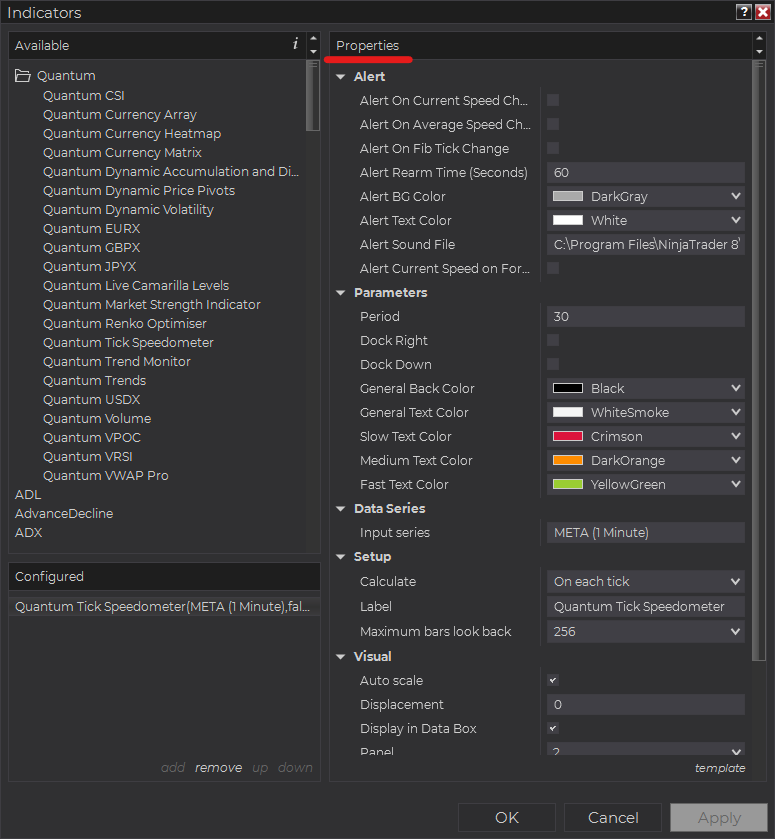
Main Settings
Alert
The following settings affect the indicator’s alert notifications displayed in the Alerts Log. You can open the Alerts Log from your NinjaTrader 8 client’s menu bar in the main window at New > Alerts Log.
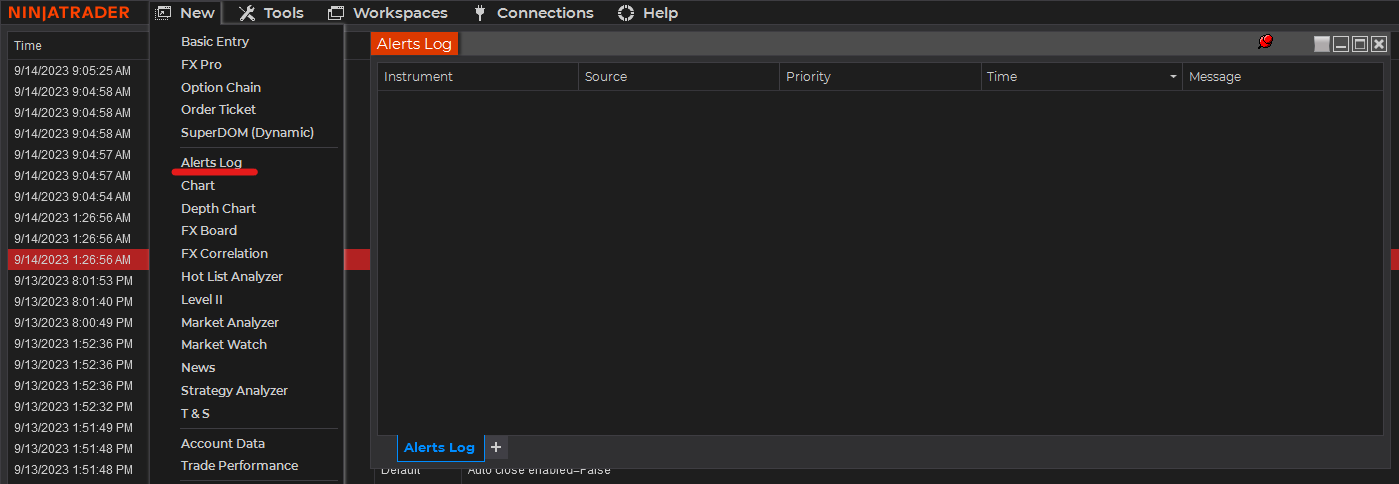
Alert On Current Speed Change
When enabled, the indicator sends an alert notification in the Alerts Log when the signal on the Current Speed changes.
Alert On Average Speed Change
When enabled, the indicator sends an alert notification in the Alerts Log when the signal on the Average Speed changes.
Alert On Fib Tick Change
When enabled, the indicator sends an alert notification in the Alerts Log when the value of the Fib Tick changes.
Alert Rearm Time (Seconds)
This adds a delay to the next alert notification, expressed in number of seconds.
Alert BG Color
This setting allows you to customize the background color of the indicator’s messages as they appear in the Alerts Log.
Alert Text Color
This setting allows you to customize the color of the text as the indicator’s messages appear in the Alerts Log.
Alert Sound File
You can change here the sound file the platform uses when this indicator triggers an alert. By default, it uses the Alert1.wav file packaged with your NinjaTrader installation. Please make sure that the file is supported and the absolute path to the sound file is entered correctly.
Alert Current Speed on Forming Candle
When enabled, the alert triggers shift from the most recently closed candlestick to the forming candle.
Parameters
Period
This is the number of bars the indicator processes to calculate the relative speed or rate of incoming ticks in a given timeframe. The default is 30. You can change this if you wish, but please do bear in mind that any increase will also increase the processing load on the indicator and may slow it down as a result.
Dock Right
When enabled, the indicator’s display panel docks at the right-hand side of the chart window.
Dock Down
When enabled, the indicator’s display panel docks at the left-hand side of the chart window.
General Back Color
Sets the background color of the display panel.
General Text Color
Sets the font color of the display panel.
Slow Text Color
Sets the background color of the Slow speed signal on the display panel.
Medium Text Color
Sets the background color of the Medium speed signal on the display panel.
Fast Text Color
Sets the background color of the Fast speed signal on the display panel.
Other Settings
Data Series
Input Series
Opens the indicator Input Series dialogue which allows you to select the source of data for your indicator’s calculations.
Setup
Calculate
Sets the frequency at which the indicator performs its calculations.
Label
The label of the indicator’s instance displayed on the chart.
Maximum bars look back
Determines the maximum number of bars the indicator can look back to perform calculations on historical data. This is set to 256 by default (the most memory-friendly setting), but it can be changed to “infinite” to allow for a greater look back period.
Visual
Auto scale
When enabled, the indicator will be included in the chart panel’s vertical automatic scaling.
Displacement
Sets the number of bars by which to displace the indicator plots.
Display in Data Box
Enables or disables the inclusion of the indicator’s plot values in the Data Box
Panel
Sets the panel in which the indicator is plotted. If you select “Same as input series,” the indicator will be linked to the Input Series and automatically move if the Input Series is modified to a different panel.
Price marker(s)
When enabled, the indicator value is plotted in the axis selected under the “Scale Justification” property.
Scale justification
Sets the scale on which the indicator will be plotted. Possible values are “Right,” “Left,” and “Overlay”.
Visible
Enables or disables visibility and function of the indicator on the chart.
Plots
Sets a variety of parameters, such as color, for the plots drawn by the indicator.
Unloading the indicator
Here are the steps to remove the indicator in the chart.
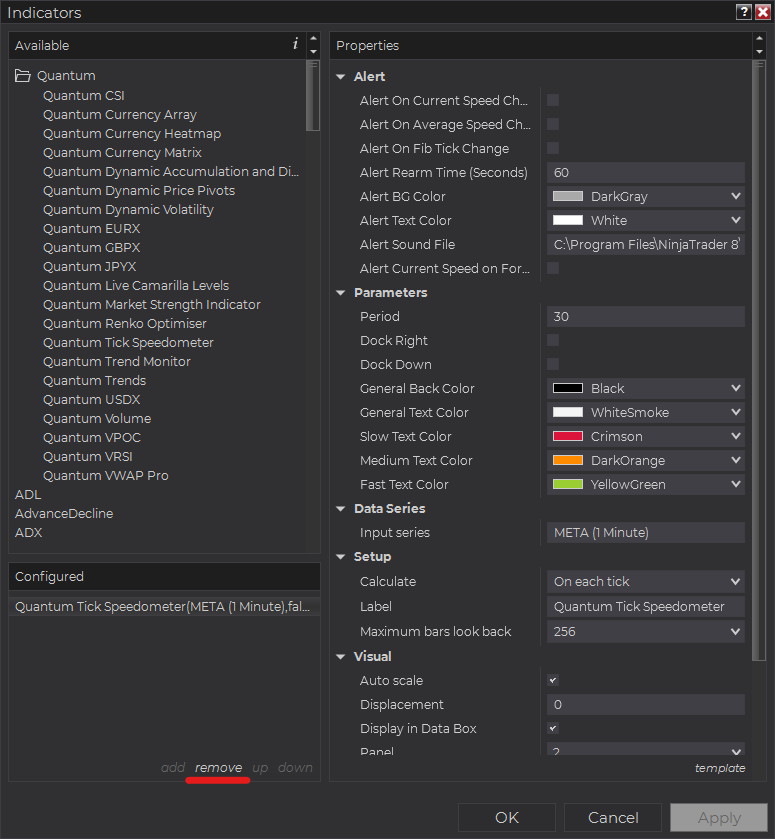
Right-click on the chart then select Indicators… from the menu. Select Quantum Tick Speedometer from the Configured section and click “remove” then OK to confirm and the indicator should be unloaded from your chart.
Using the Quantum Tick Speedometer in the NinjaTrader Market Analyzer
Valid Rows
The Quantum Tick Speedometer indicator works in any instrument.

Adding the Quantum Tick Speedometer as a Market Analyzer Column
Here are the basic steps to add the Quantum Tick Speedometer in the Market Analyzer:
Make sure valid rows are present in the Market Analyzer window.
Right-click anywhere in the Market Analyzer window then select “Columns…” in the context menu.
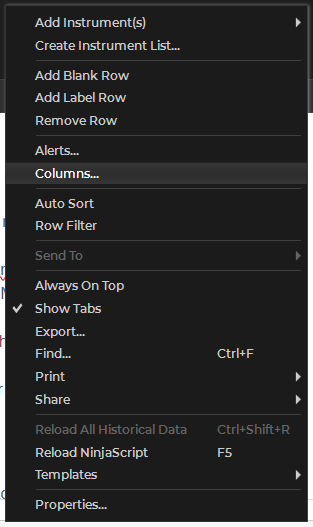
The Columns window appears. In the Available section, go to QuantumMarketAnalyzerColumns folder then double-click the Quantum Tick Speedometer to add the indicator as one of the columns in the Market Analyzer.

Select the type of information you like to display using the Column drop down menu under the Properties section of the indicator.
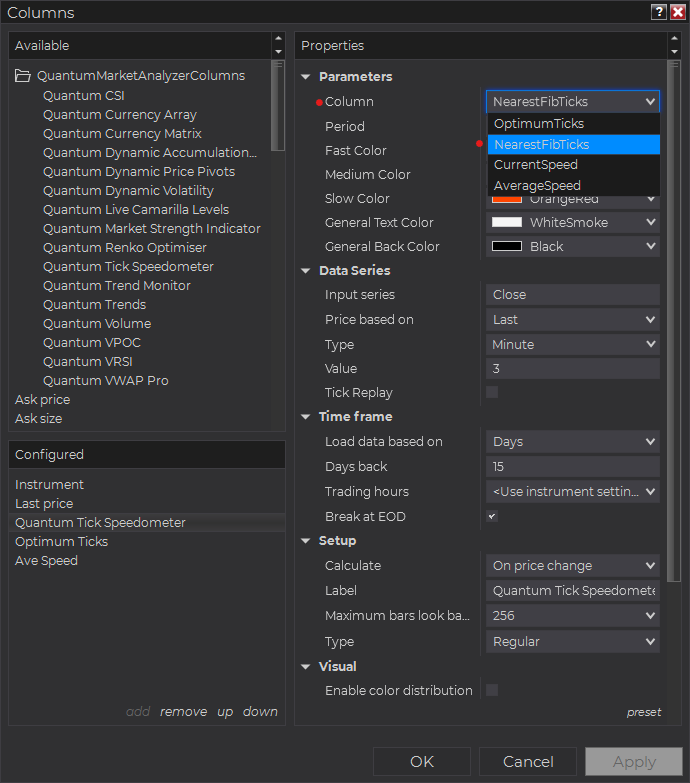
Set the timeframe of the indicator in Properties > Data Series section with the following user inputs:

Type – select a time-based series such as Minute or Day
Value – set the interval for the type of series selected above
When running the indicator in timeframes less than Hourly intervals, please configure the “Load data based on” property to “Days” and the “Days back” property to the default value of 5 days to ensure that there is enough data for the indicator to work with.

After you have finished all your configurations, click OK to confirm your chosen settings and to add the indicator as a column in your Market Analyzer window.
Column Options
The Quantum Tick Speedometer is a multi-faceted indicator that can display different types of signals which can be selected through its Column drop down menu found under the Properties section. You can customize the indicator’s function in the Market Analyzer by selecting any of the options enumerated below.
- OptimumTicks – displays the current Optimum Tick size.
- NearestFibTicks – displays the current Optimum Tick size, rounded off to the nearest Fibonacci number.
- CurrentSpeed – displays the tick speed of the current bar (SLOW, MEDIUM, or FAST).
- AverageSpeed – displays the average tick speed of the instrument (SLOW, MEDIUM, or FAST).
Tip: You can change the Label property of the column to describe what type of signal you choose to display.



